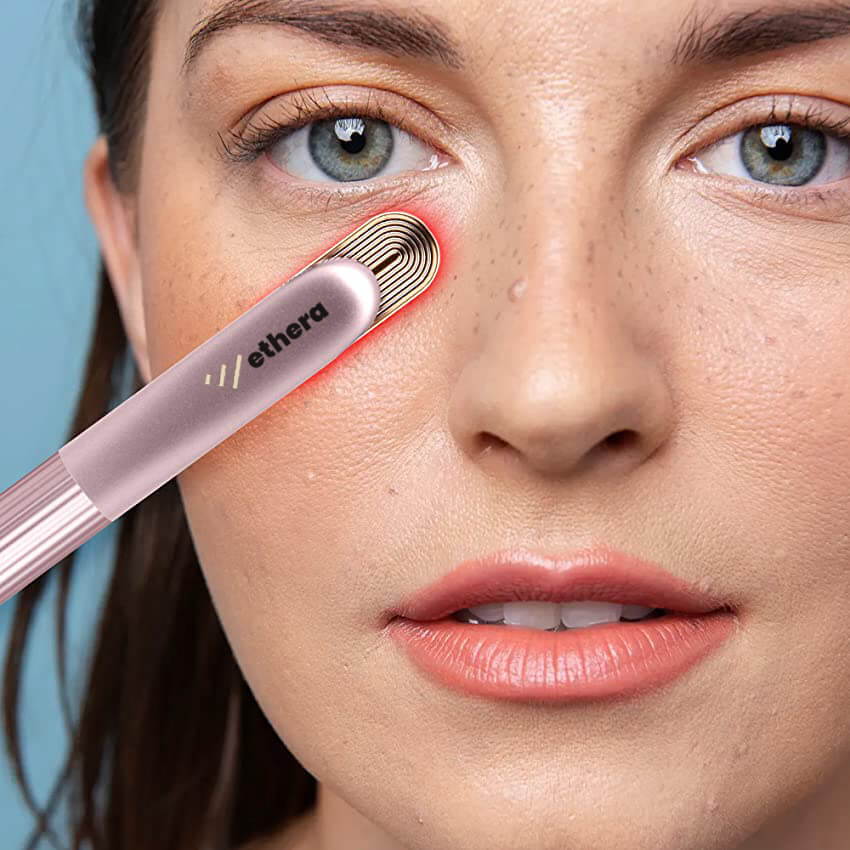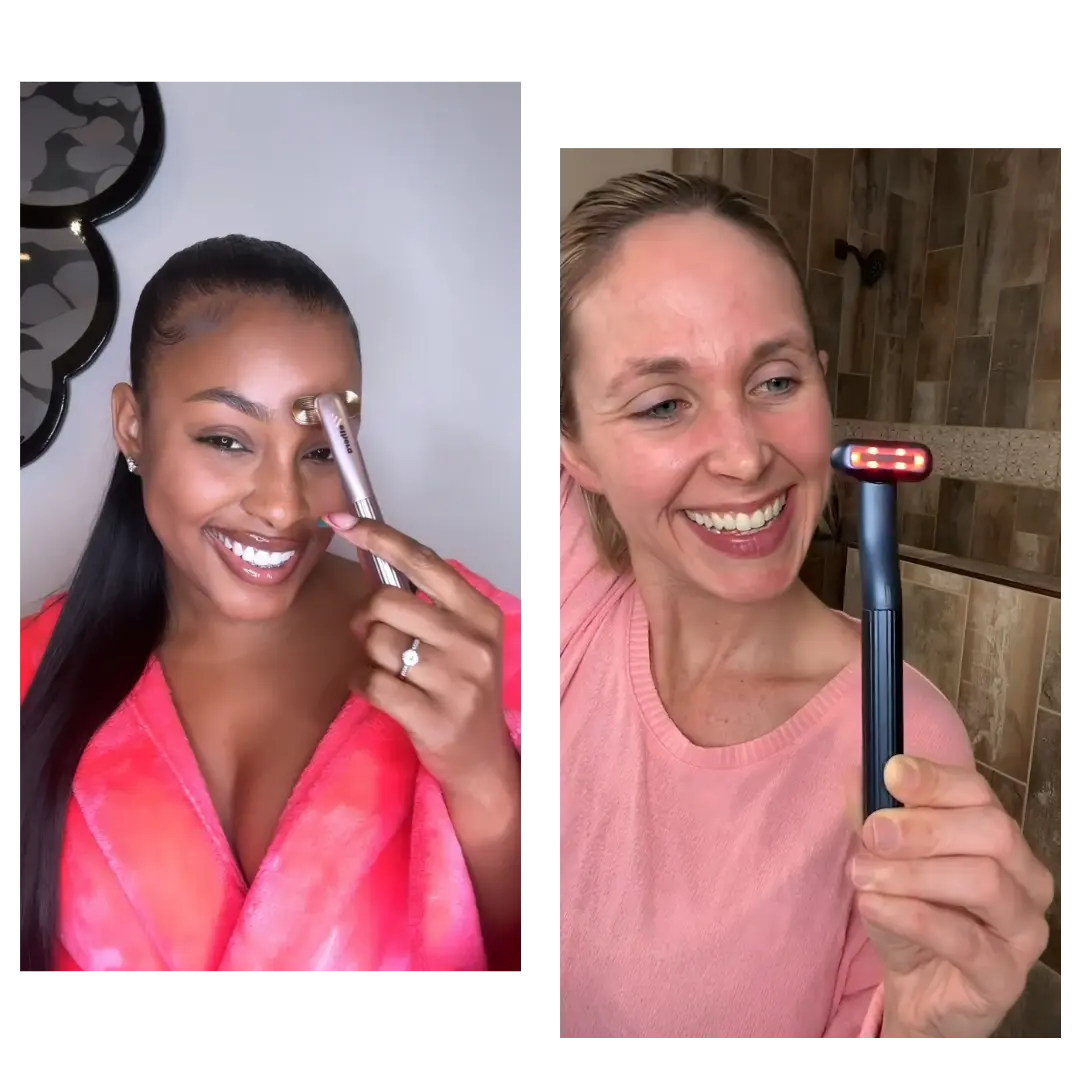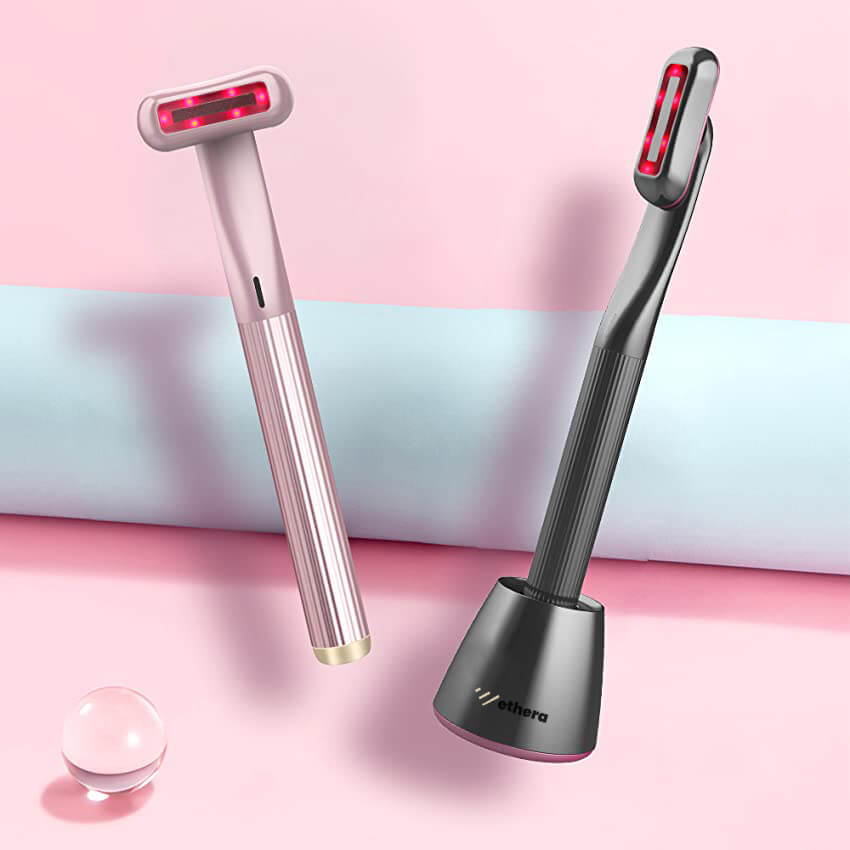Unlocking The Benefits Of Red Light Therapy
In recent years, red light therapy has become a popular treatment option for a range of health concerns. This non-invasive and painless therapy uses low-level wavelengths of light to penetrate the skin and provide a variety of benefits. In this article, we'll explore the science behind red light therapy, the health benefits it offers, treatment options, and strategies for incorporating it into your wellness routine.
22-minute read
Published on 11.04.2023
Table of contents:

Understanding Red Light Therapy
What is Red Light Therapy?
Red light therapy is a form of treatment that uses low-level wavelengths of light to penetrate the skin and provide a range of benefits.
This type of therapy is non-invasive and is considered safe for human and animal use. Red light therapy has been used to treat a variety of conditions, including skin disorders, pain, inflammation, and even depression.
Red light therapy is different from other forms of light therapy, such as UV radiation, which can damage the skin. The wavelengths used in red light therapy are longer and do not produce heat, making it a safe and effective treatment option for many people.

How Does Red Light Therapy Work?
The light from red light therapy devices penetrates the skin and is absorbed by cells in the body.
This absorption process stimulates the cells to produce more energy and improves cellular function. The energy produced by the cells is used to repair damaged tissue, reduce inflammation, and promote healing.
Red light therapy is believed to enhance cell metabolism, promote tissue repair, and improve circulation. It is also thought to stimulate the production of collagen, a protein that is essential for healthy skin and hair.
The Science Behind Red Light Therapy
Red light therapy has been the subject of numerous studies, and researchers have found evidence of its effectiveness in a range of applications.
A study published in the Journal of Photochemistry and Photobiology found that red light therapy could improve skin health and reduce signs of aging.
Another study, published in Pain Research and Management, found that red light therapy could reduce pain and inflammation in those suffering from osteoarthritis.
Research has also shown that red light therapy can be effective in treating acne, eczema, and psoriasis. A study published in the Journal of Investigative Dermatology found that red light therapy could reduce inflammation and improve the skin's ability to heal.
Red light therapy has even been used to treat depression. A study published in the Journal of Affective Disorders found that red light therapy could improve symptoms of depression in those with seasonal affective disorder.
Overall, the science behind red light therapy is still evolving, but the evidence so far suggests that it is a safe and effective treatment option for a variety of conditions.
Health Benefits of Red Light Therapy
Skin Health and Anti-Aging
Red light therapy has been shown to improve skin health by promoting collagen production, reducing the appearance of fine lines and wrinkles, and improving skin texture and firmness.
Collagen is a protein that gives our skin its elasticity, and as we age, our bodies produce less collagen, leading to sagging skin and wrinkles.
A study conducted by researchers at Boston University found that red light therapy could increase collagen production by up to five times, helping to restore the skin's natural elasticity.
Red light therapy has also been shown to reduce inflammation, which can lead to acne and other skin conditions. By reducing inflammation, red light therapy can help improve overall skin health.
Pain Relief and Inflammation Reduction
Red light therapy has been used to relieve pain and reduce inflammation in those suffering from chronic pain conditions such as arthritis.
The therapy works by increasing blood flow to the affected area, which can help reduce inflammation and promote healing. A study published in the Journal of Arthritis found that red light therapy could reduce pain and stiffness in participants suffering from osteoarthritis of the knee.
Red light therapy has also been shown to be effective in treating other types of pain, such as back pain, neck pain, and fibromyalgia. By reducing pain and inflammation, red light therapy can help improve overall quality of life for those suffering from chronic pain conditions.

Improved Sleep and Circadian Rhythm
Red light therapy has been shown to improve sleep and regulate the body's circadian rhythm. The therapy works by stimulating the production of melatonin, a hormone that regulates sleep.
A study conducted by researchers at the University of Oxford found that red light therapy could improve sleep quality and reduce the time it takes to fall asleep.
In addition to improving sleep, red light therapy has also been shown to help regulate the body's circadian rhythm, which can help improve overall health and well-being.
By regulating the body's internal clock, red light therapy can help improve mood, energy levels, and cognitive function.
Mental Health and Cognitive Function
Red light therapy has been shown to have positive effects on mental health and cognitive function. The therapy works by stimulating the production of ATP, a molecule that provides energy to the cells in our bodies.
A study published in the Journal of Neurotrauma found that red light therapy could improve cognitive function in those suffering from traumatic brain injuries.
Red light therapy has also been shown to be effective in treating depression and anxiety. By stimulating the production of serotonin, a neurotransmitter that regulates mood, red light therapy can help improve overall mental health and well-being.
Sumarry: red light therapy is a safe and effective treatment for most people that can help improve overall health and well-being. Whether you are looking to improve your skin health, reduce pain and inflammation, improve sleep and circadian rhythm, enhance athletic performance and recovery, or improve mental health and cognitive function, red light therapy can be a great option.
Red Light Therapy Devices and Treatment Options
Red light therapy, also known as low-level laser therapy, has gained popularity in recent years, with many people turning to at-home devices and professional treatment centers for its benefits.
At-Home Devices
At-home red light therapy devices are a convenient and cost-effective option for those who want to incorporate this therapy into their daily routine. These devices come in a variety of shapes and sizes, from handheld devices to full-body light therapy panels.
Handheld devices are great for targeted treatments, such as reducing acne and aging signs, as well as improving joint pain. They are easy to use and can be used anywhere on the body.
Full-body panels, on the other hand, offer a more comprehensive treatment option. These panels emit red light over a larger surface area, allowing for a full-body treatment in as little as 10 minutes.
When using an at-home device, it is important to follow the manufacturer's instructions carefully. Most devices require daily use for several weeks to see noticeable results.
Professional Treatment Centers
Professional red light therapy centers offer a range of options for those seeking more intensive treatments. These centers typically use more powerful devices than at-home options, allowing for deeper penetration of the light into the skin.
Facial treatments are a popular option at professional centers, as they can improve skin tone and texture, reduce fine lines and wrinkles, and even out pigmentation. Full-body treatments are also available, which can help reduce inflammation, improve circulation, and promote overall healing.
Professional centers may also offer targeted treatments for specific health concerns, such as joint pain or muscle soreness. These treatments may involve the use of red light therapy in combination with other therapies, such as massage or acupuncture.
Choosing the Right Device for Your Needs
When selecting a red light therapy device, it is important to consider your specific health concerns and treatment goals. Consulting with a healthcare professional can help you determine the best course of action for your individual needs.
It is also important to choose a device that emits the correct wavelength of light. Red light therapy typically uses wavelengths between 600 and 950 nanometers, which have been shown to have the most therapeutic benefits.
Finally, consider the size and portability of the device. If you plan to use it on a specific area of the body, such as the face or joints, a handheld device may be the best option. If you want a full-body treatment, a larger panel may be more appropriate.
Overall, red light therapy is a safe and effective treatment option for most people. Whether you choose an at-home device or seek treatment at a professional center, incorporating red light therapy into your wellness routine can have significant benefits for your overall health and well-being.
How to Incorporate Red Light Therapy into Your Routine
Determining the Optimal Treatment Frequency
The optimal frequency for red light therapy treatments varies depending on the individual and the health concern being addressed. Consulting with a healthcare professional can help you determine the best frequency and duration for your specific needs.
Combining Red Light Therapy with Other Wellness Practices
Red light therapy can be used in conjunction with other wellness practices to enhance its effects. For example, incorporating red light therapy into a regular exercise routine can help enhance athletic performance and speed up recovery time.
Tracking Your Progress and Adjusting Your Approach
Tracking your progress and adjusting your approach can help to ensure that you are getting the maximum benefits from red light therapy. Keeping a journal to document any changes in your health and wellness can help you determine if adjustments to your treatment plan are necessary.
Final Thoughts
Red light therapy is a non-invasive treatment that offers a wide range of health benefits and is considered safe for most people except for those with photosensitivity. Whether you choose to incorporate an at-home device into your wellness routine or seek professional treatments at a red light therapy center, the potential health benefits of this therapy make it worth considering for anyone looking to improve their overall health and well-being.




